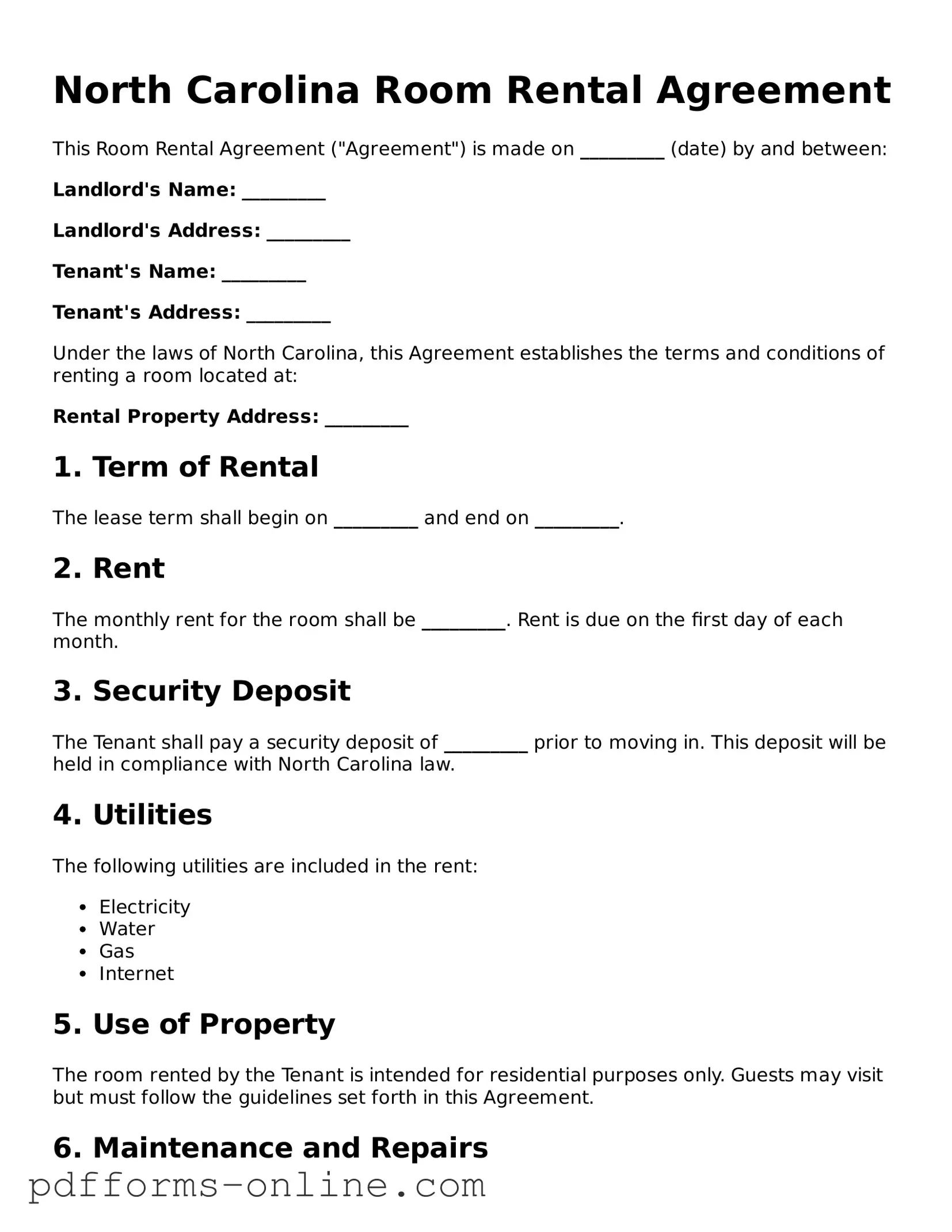North Carolina Room Rental Agreement
This Room Rental Agreement ("Agreement") is made on _________ (date) by and between:
Landlord's Name: _________
Landlord's Address: _________
Tenant's Name: _________
Tenant's Address: _________
Under the laws of North Carolina, this Agreement establishes the terms and conditions of renting a room located at:
Rental Property Address: _________
1. Term of Rental
The lease term shall begin on _________ and end on _________.
2. Rent
The monthly rent for the room shall be _________. Rent is due on the first day of each month.
3. Security Deposit
The Tenant shall pay a security deposit of _________ prior to moving in. This deposit will be held in compliance with North Carolina law.
4. Utilities
The following utilities are included in the rent:
- Electricity
- Water
- Gas
- Internet
5. Use of Property
The room rented by the Tenant is intended for residential purposes only. Guests may visit but must follow the guidelines set forth in this Agreement.
6. Maintenance and Repairs
The Landlord is responsible for maintaining the property in good condition. The Tenant agrees to notify the Landlord of any necessary repairs.
7. Termination
Either party may terminate this Agreement by providing 30 days written notice to the other party.
8. Governing Law
This Agreement shall be governed by the laws of the State of North Carolina.
9. Signatures
Both parties agree to the terms outlined above.
Landlord Signature: ______________________ Date: ___________
Tenant Signature: _______________________ Date: ___________
